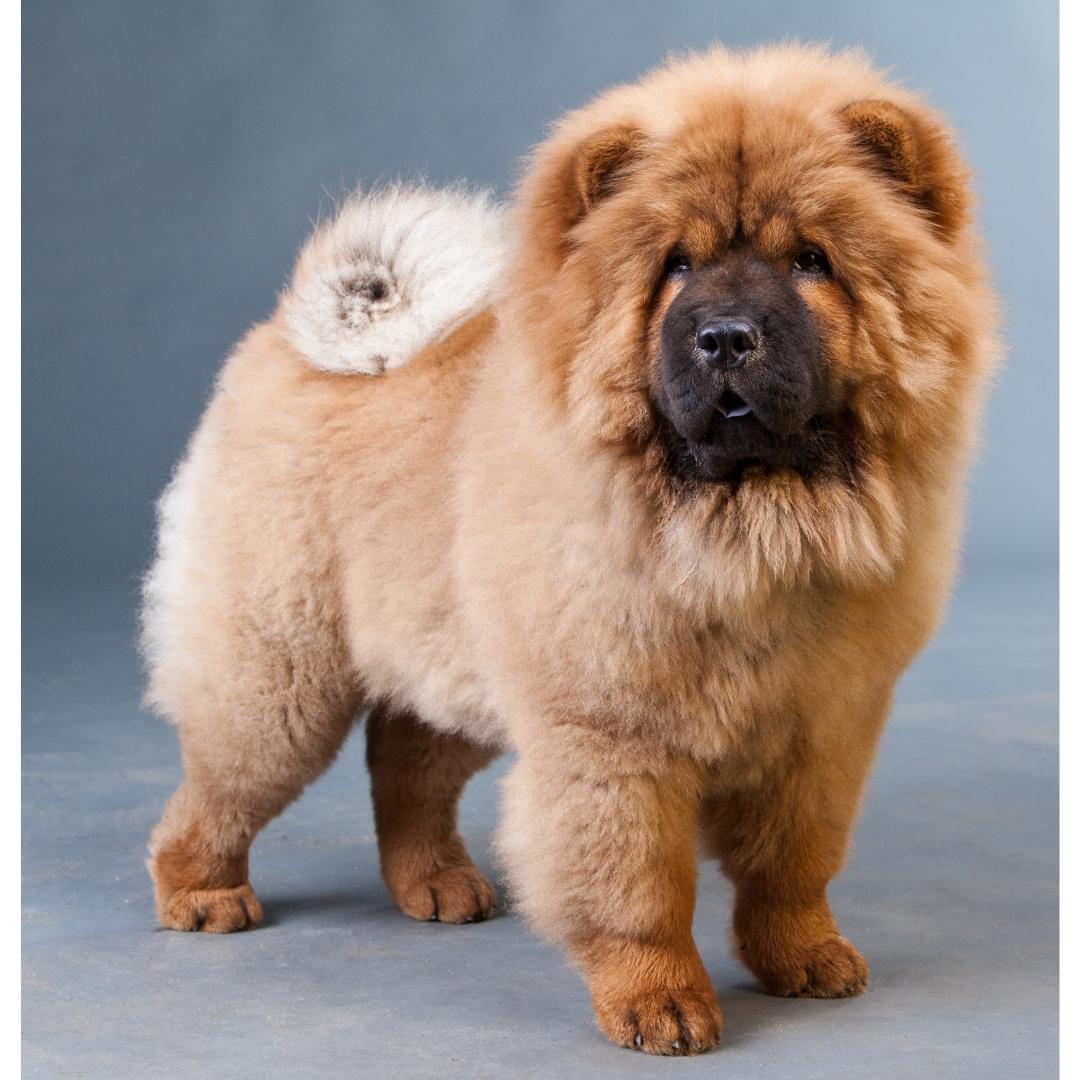CHOW CHOW
| Group: | Non-sporting |
|---|---|
| Size: | Medium |
| Temperament: | Modest, Intelligent, and Serious |
| Height: | 19-22 inches (male), 18-20 inches (female) |
| Weight: | 25-32 Kg (male), 21-27 Kg (female) |
| Life Expectancy: | 8-12 years |
| Origin: | China |
| Coat Length: | Medium |
| Coat Type: | Smooth, Rough, Double |
| Color: | Black Blue Cinnamon Cream Red |
About
Chow Chows feature deep set almond eyes, a stiff-legged stride, and a very distinctive blue-black tongue. The neck region has exceptionally dense hair, giving it a characteristic mane or ruff look. They are excellent apartment dogs since they are as tidy as cats, are simple to housebreak, and don't smell much compared to other dogs.
Nutrition
Opt for a low-grain diet. Regularly examine the Chow's skin for any irritation or other allergy symptoms, as dog food manufacturers frequently alter their formulas. Be aware that dog treats can also cause gastrointestinal and allergic problems. It is common for Chow Chows to gain weight and have diabetes. Because of this, take careful not to overfeed your dog and make sure they don't get any table leftovers. Because Chow Chows have a higher risk of producing insufficient pancreatic digestive hormones, it is advised to supplement their food with digestive enzymes.
Ideal Meal Breakdown
Protein
32
Fat
18
Carbohydrates
40
Others
10
Exercise
The Chow Chow is a lively, attentive dog with average exercise requirements. The Chow needs daily strolls and moderate toy play, but not excessive roughhousing or vigorous exercise. As the breed does not tolerate high heat or humidity well, avoid exercising during the hottest parts of the day. Four or more daily walks at a moderate pace will keep Chow and owner content and healthy, and participating in activities as a pair strengthens the human-canine bond.
Grooming
Both the smooth and rough-coated Chows have a thick double coat that needs to be groomed frequently. The dog's skin and coat can be kept healthy with thorough brushing at least twice a week and monthly baths. Make sure to address any parasite problems, such as fleas or ticks, right away. With every grooming, take care of your ears and eyes, and keep your nails trimmed. If not regularly groomed, the puppy coat and the coat around the head can become severely matted. All mats must be taken out, and the undercoat must be brushed or combed through carefully. After a bath, it is advised to thoroughly dry the Chow using a cool air dryer.
Training
To help ensure that the Chow develops into a well-adjusted, well-mannered companion, early socialisation and puppy training classes are advised. The secret to effective training is patience and constant, positive reinforcement. Although very intelligent, the Chow Chow can be stubborn. To establish a relationship based on trust, harsh training techniques must be avoided. The best techniques to use with your Chow are patience, praise, and consistent practise.
Health
Eyelid entropion, hip dysplasia, elbow dysplasia, allergies, and thyroid dysfunction are possible health problems for Chow Chows. These problems can be identified and treated with veterinary care, and they may be reduced by health screening, responsible breeding, and routine health care. Not all Chow Chows will experience them, but by keeping an eye out for signs, you may identify them early and administer the proper care. Keeping a Chow healthy is simplest accomplished by controlling their weight. Owners must be careful not to overfeed their Chow Chows to prevent obesity.
History
The stone lion sculptures that protect Buddhist temples are thought to be based on the Chow Chow, whose ancestry may be traced to Northern China and Mongolia. From the robust Norwegian Elkhound to the delicate Pomeranian, the Chows are thought to be the ancestors of various Spitz-type breeds. Its contemporary moniker, "Chow Chow," has an intriguing history. In the latter half of the 18th century, British traders shipped some of the canines that resembled bears. The term "chow chow" was used to describe a variety of objects, including dogs, and it clung to the breed. Queen Victoria, who later in the 18th century purchased one, is responsible for the Chow Chow's surge in popularity.
